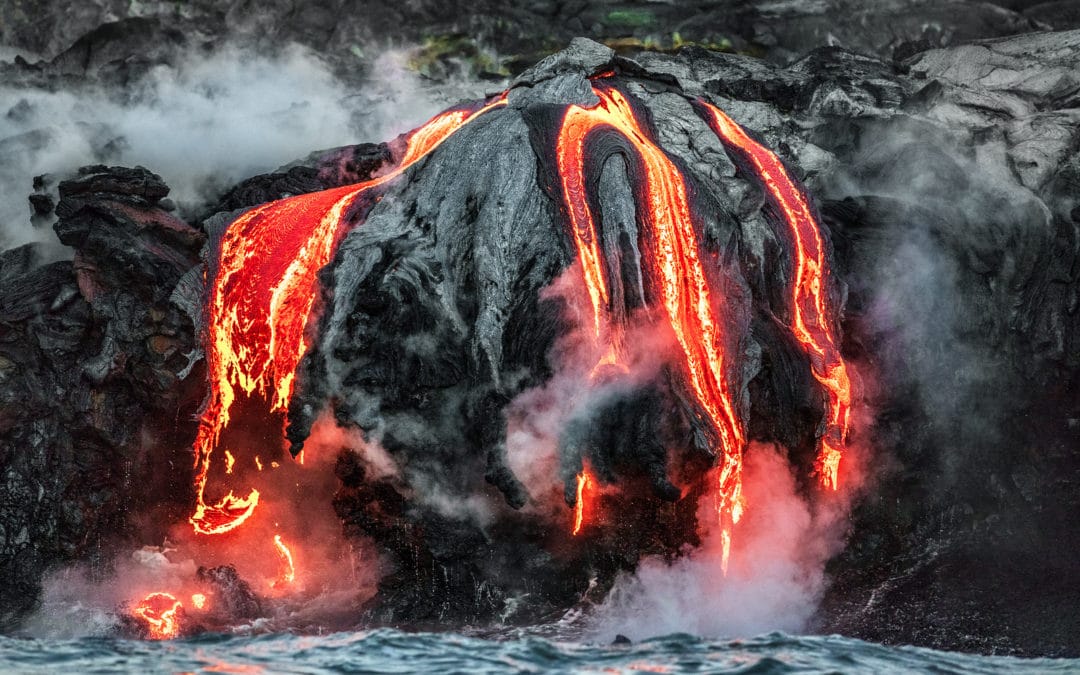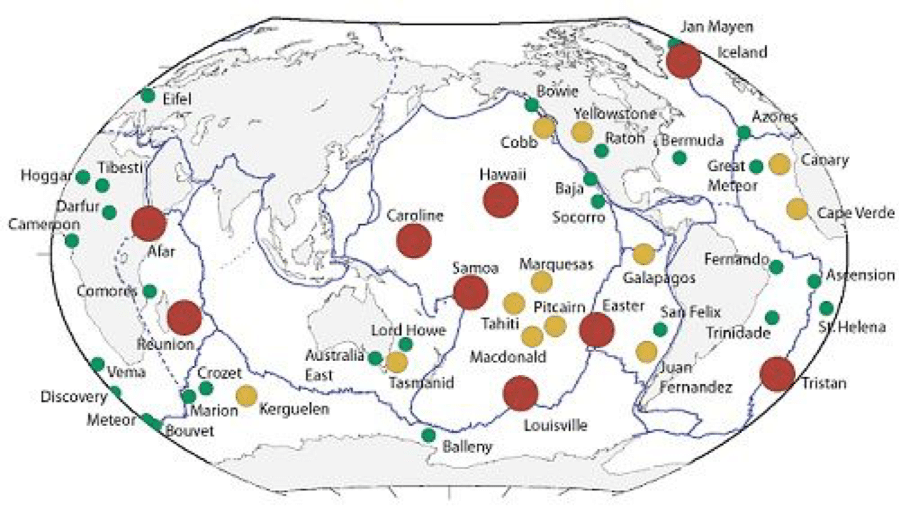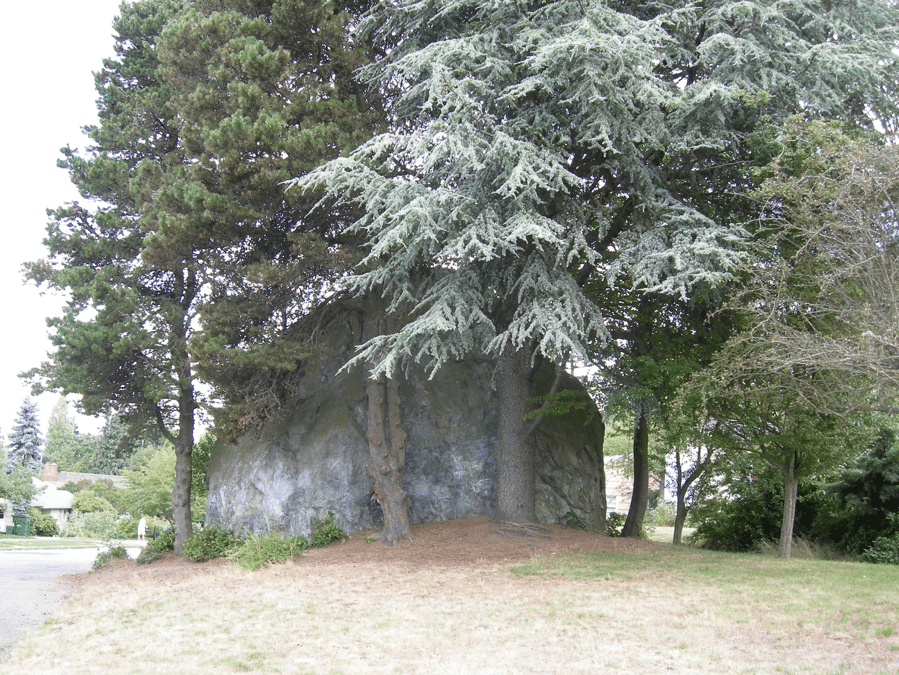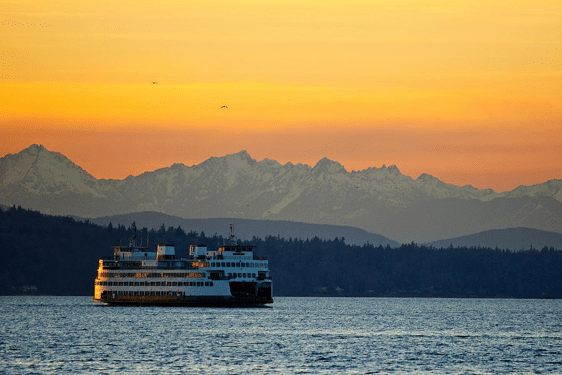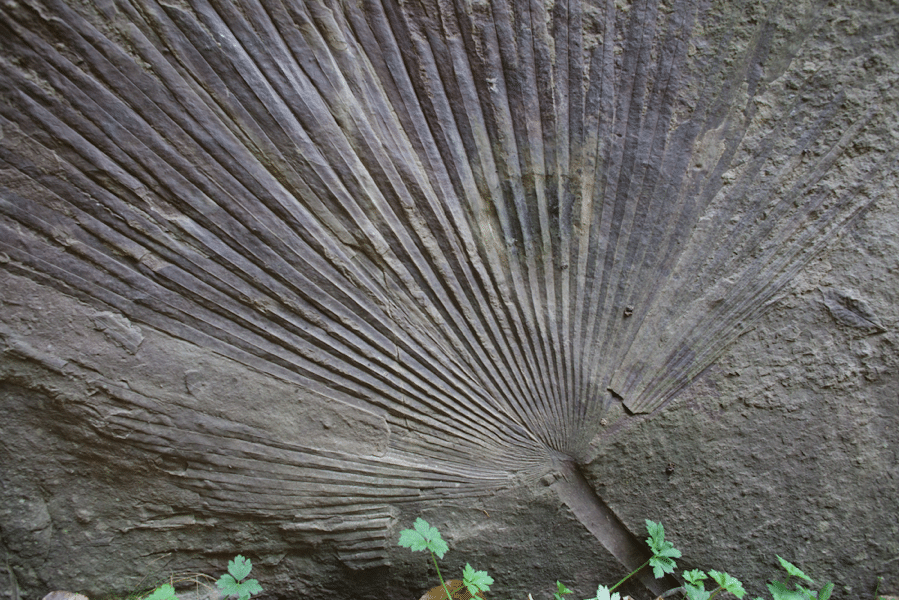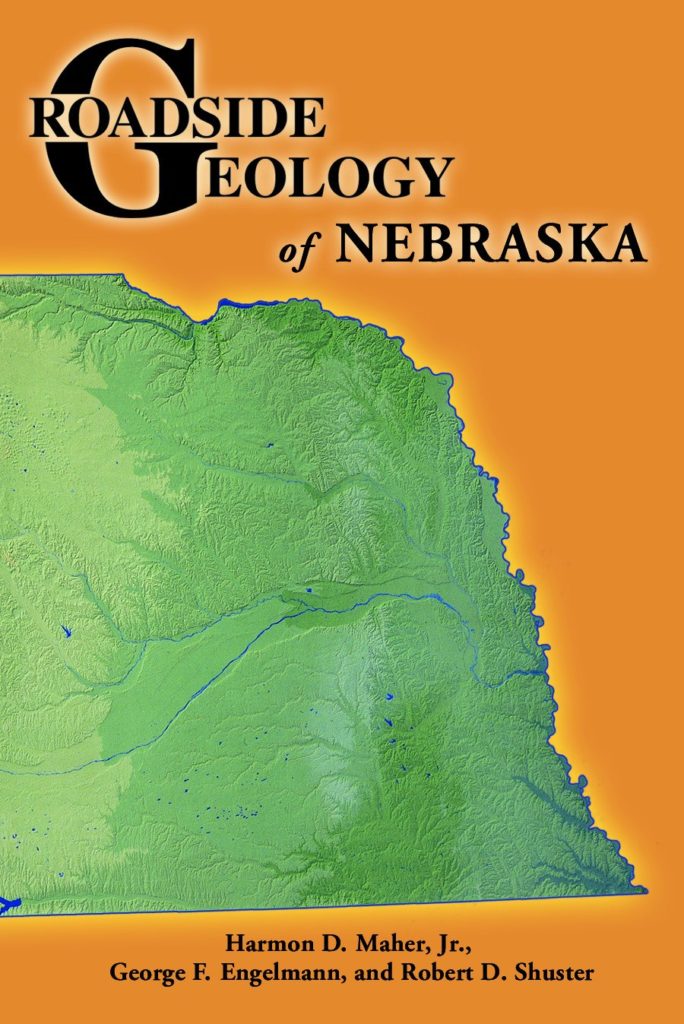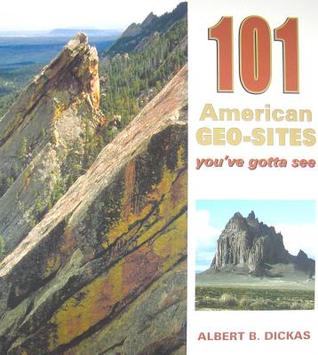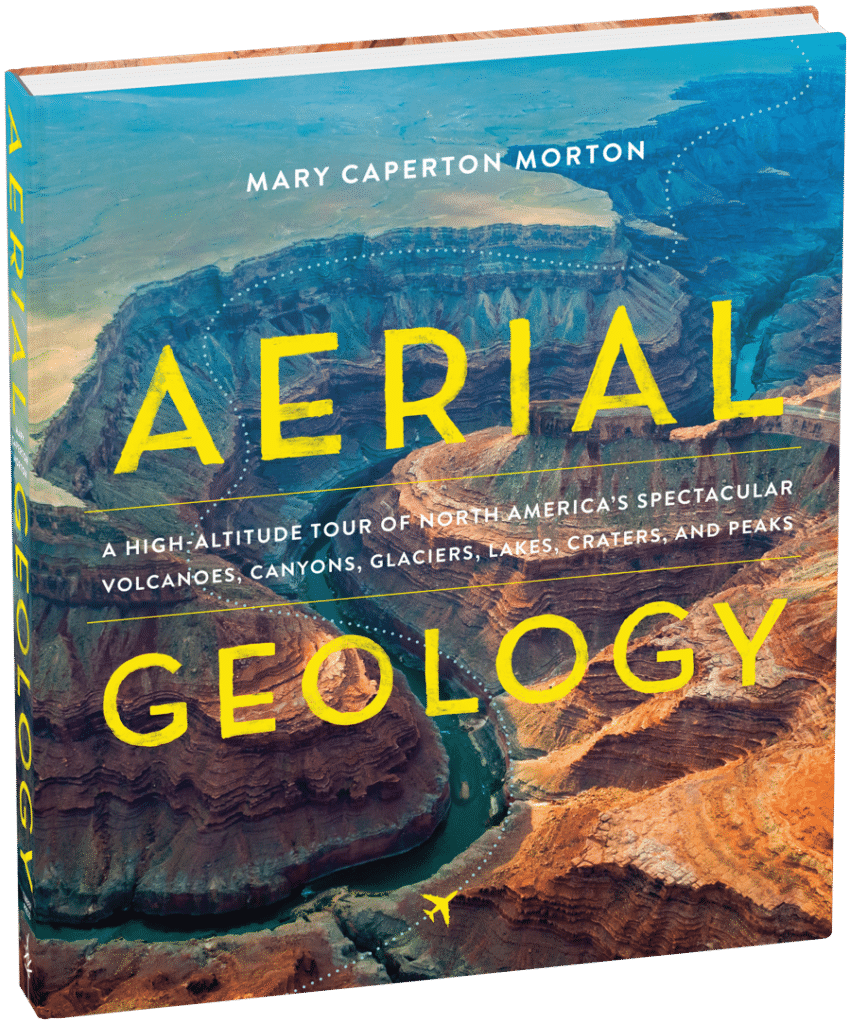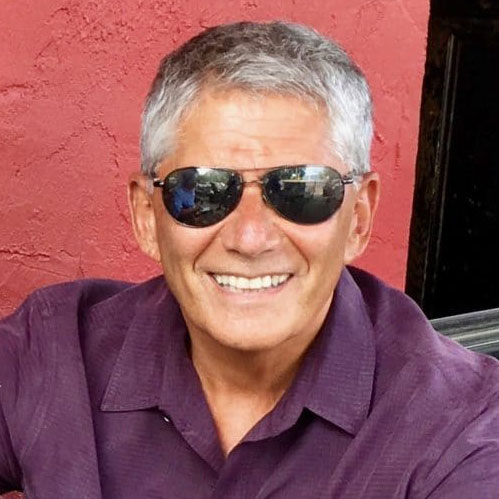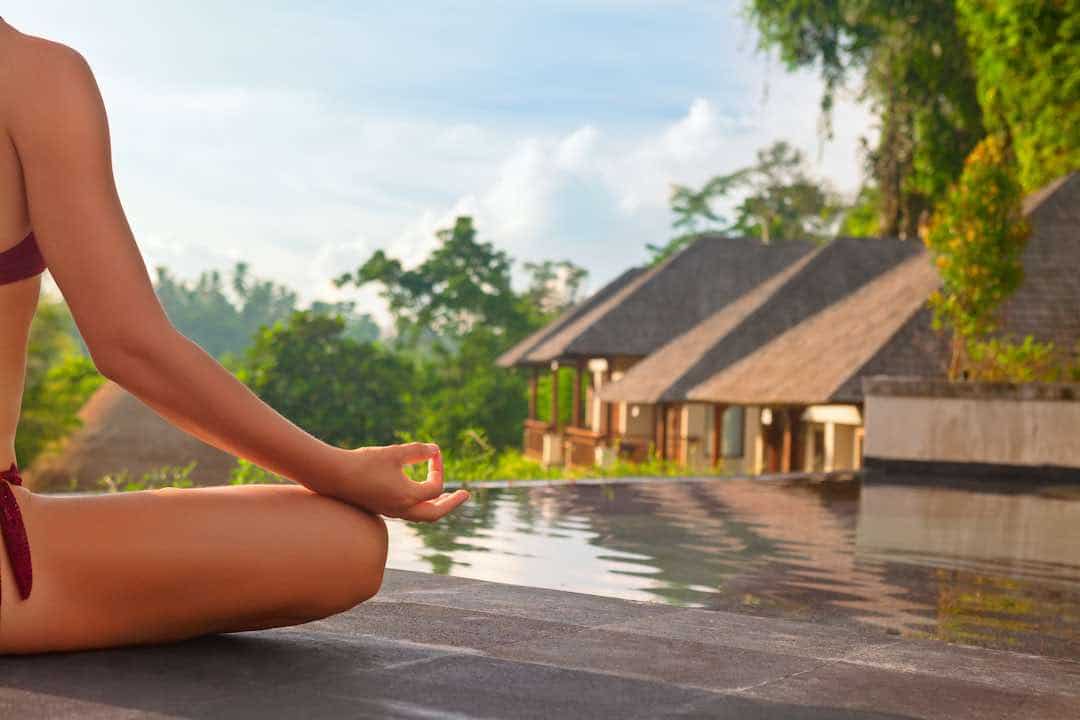Strange question, no? Well, there just might be an erupting Hawaiian volcano in your backyard — but only if you live in Leilani Estates in the southeastern corner of the Big Island of Hawai’i. Perhaps you’ve seen the tragic YouTube videos of the 600 family homes engulfed by red-hot lava in a matter of seconds. Or the video of the shockingly rapid disappearance of a Ford Mustang beneath another rushing stream of red-hot lava. Even the Hawai’i County mayor on the Big Island, Mr. Harry Kim – along with more than 600 of his neighbors – has lost his home to the eruption that began May 3, 2018.
- House set ablaze and then consumed by Hawaiian lava.
- A last look at this Ford Mustang. It’s about to become part of an Hawaiian lava-flow formation.
A last look at this Ford Mustang. It’s about to become part of an Hawaiian lava-flow formation. For the video, take a look below.
Why does the island paradise of Hawai’i suffer such periodic geological grief? The locals invoke the moodiness of the island’s volcanic goddess, Pele. The simple geological explanation is that the southeastern corner of the Big Island currently sits directly atop a vast plume of rising magma – called a hot spot – that wells up toward the floor of the central Pacific Ocean from deep in the Earth’s mantle, a section of the planet’s interior that extends down to a depth of roughly 2900 km (1800 miles). At last count, there are about 50 of these chimneys of heat spread across the planet’s surface, many of them located on the Earth’s sea floors.
The Earths Hotspots
So if you’re wondering if your home in Iowa might be in danger . . . relax . . . the nearest hotspot is in northwestern Wyoming directly beneath the volcanic wonderlands of Yellowstone National Park. And thus, the answer to the initial question – might there be a volcanic eruption coming soon to your neighborhood – is most probably “no”, unless perhaps you live in Yellowstone Country, central Iceland, or the great rift valley of Eastern Africa.
And of course, life without the specter of losing your home or your car to a lava flow is a very good thing. Consider the plight of Mr. Darryl Clinton, who on the evening of May 23, 2018, was fighting off an advancing lava flow that threatened his and his neighbor’s homes in the Pahoa district using nothing more than a garden house to cool and perhaps freeze the advancing lava with cold water. Alas, despite his noble efforts, the flow unexpectedly hurled a bowling-ball-sized block of rock-hard congealed lava at Mr. Clinton while he spoke with authorities on his cellphone, shattering his leg in multiple places. And what about those geo-ignorant tourists forever trying to sneak closer to the off-limits lava flows?
Don’t they know that with every breath, they’re inhaling an extremely unhealthy dose of lung-killing volcanic haze – aka “laze”—a gassy mix of microscopic volcanic-glass particles and hydrochloric-acid vapor produced when hot lava flows into the Pacific, shattering into glass shards and spewing vast billows of acidic steam. Here this article becomes an urgent public-service announcement: Steer well clear of any lava flow, no matter how compelling, seductive, and unthreatening they may appear. Think of Darryl Clayton.
My personal connection to this eruption – other than having hiked the area and helicoptered over similar eruptions in the past – has been to respond to hundreds of excited inquiries from my former geology students who are just itching to know more about these exciting goings-on. As life-long learners, they can’t help but wonder about Pele’s power while simultaneously worrying how the eruption might affect them. Will their families be safe on their upcoming vacations to this island paradise?
So wherein lies the intrinsic value for all of us when we learn more about this classic example of “geology porn?” Well, aside from warning you off the prospect of being pelted by a 20000C volcanic bomb, a host of other benefits may accrue to your explorations of your local geological wonders.
If we are physically able, we all need to get outside, get some fresh air, get a bit of exercise, and, most importantly, we all need to stimulate our “maturing” brains with new discoveries and challenging thought problems to solve. What better way to savor all of these benefits than to go and explore the geologic wonders that are indeed right in your own backyard. Just pick one that piques your curiosity and you’re on your way to a headstart on those 10,000 daily steps our bodies crave. And at the same time, you’ll be feeding what may be your long-dormant sense of child-like curiosity as your commit or recommit to a life of life-long learning to which many of us aspire.
A few salient quotes from the hundreds I’ve run across and collect almost daily:
“Every child starts off as a scientist, as an explorer, as someone who is infinitely curious.”
-Novelist Richard Powers.
Somewhere along the way as we live our “adult” lives, we “misplace” that sense of wonder. What a great way to rediscover it.
And as the 19th-century French poet Charles Beaudelaire suggested:
“Genius is nothing more or less than childhood recovered at will.”
And to lend a bit of perspective to the majesty of the natural wonders that surround us, consider what the 20th-century English writer Virginia Wolff shared about the power and eternal nature of the natural world:
“The very stone one kicks with one’s boot will outlast Shakespeare.”
For many of us, the natural world inspires and mystifies. And seeing it up-close, thinking about it deeply, puzzling over it – is great sustenance for our brains. And doing it socially with a group of friends or perhaps on a field trip organized by the local community college or natural-history museum will also do wonders for your maturing brain, add years to your life, and perhaps even ward off the onset of dementia and other forms of cognitive decline. For much more on the emerging neuroscientific research regarding the enormous value of this type of physically active social learning, I recommend most enthusiastically that you pick up a copy of “Brain Rules for Aging Well” written by famed neuroscientist, John Medina. This book just might change dramatically how you go about your day.
And as I said earlier, because most of you reading this don’t happen to live on the Big Island of Hawai’i, why did I open this article with all those captivating images of Hawaiian volcanic mayhem? Certainly to pique your interest. But since most of us live a long plane ride from all that red-hot excitement, I’d like us to turn our attention to much closer points of interest.
Your neighborhood may not have an erupting volcano but I can virtually guarantee that there’s something cool geologically either a walk, a hike, a bike ride, or a short car ride away from your kitchen.
Need proof?
A story. Here in the heart of urban Seattle, there are many geological wonders to behold. About 7 miles from my home, one can happen upon a house-sized glacially transported boulder (“the so-called Wedgwood Rock”) during a stroll through a quiet neighborhood in north Seattle, just down the street from Eckstein Middle School. This enormous glacial erratic (a term geologists use for an out-of-place boulder carried a long-distance by long-departed glaciers) was transported to Seattle roughly 150 miles from its bedrock home on Vancouver Island, British Columbia. It was then dropped here when Seattle’s 3000-ft-thick ice lobe melted away about 15,000 years ago. The rock itself probably had its own origins as a volcanic lava that flowed on some faraway Asian landmass — perhaps 230 million years ago and thousands of miles away in an ancient western Pacific Ocean somewhere near the equator. Quite a story to tell from one big rock.
The glacially transported Wedgwood Rock. A piece of Vancouver, British Columbia now residing In north Seattle.
Another story. About 6 miles west of the Wedgwood Rock, one can visit the steeply sloping sea cliffs of Puget Sound in a bucolic Seattle neighborhood called Magnolia. There, the residents can soak in a spectacular view of the snow-capped Olympic Mountains and enjoy exquisite sunsets (when it’s sunny of course, not a daily phenomenon in Seattle) while watching whales and ferries crisscross the Sound.
Ferry and sunset over the Olympic Mountains, Seattle
The cliffs themselves are composed exclusively of vast piles of glacial debris, like the Wedgwood Rock, left behind by the region’s most recent glacial occupation. Alas, these loose and unstable deposits – mobilized by Seattle’s copious rainfall and an occasional earthquake – make life atop this spectacular viewpoint a markedly precarious proposition.
And one last story. As a geologist, I’m always on the lookout for a new discovery – a local place where someone has identified something new and cool to visit and explore. Four years ago, I clipped an article from the Seattle Times that announced the creation of a new “rock trail” that cuts through the palm-frond-fossil-rich Chuckanut Sandstone up by Bellingham, WA, about an hour and twenty minutes north of Seattle. But as life would have it, I misplaced the article and forgot about this new trail . . . until last Saturday when my wife Julie and I were heading up toward Bellingham to look at the camas plants being grown for my wife’s newly built natural-history museum (She’s the executive director of the Burke Museum of Natural History and Culture in Seattle). I searched high and low for that newspaper clipping, found it miraculously, and off we went for a glorious hike and afternoon of fossil hunting, fresh air, and discovery. Such serendipity often occurs when you’re forever in search of that next cool place to stretch your legs . . . and your mind.
A 60-million-year-old palm frond that reminds us that the Pacific Northwest was once quite tropical.
So you see, within minutes from my home or after a short drive northward, I can visit a massive detached glacially transported chunk of Vancouver Island, marvel at the snow-capped Olympics, and wander among the remains of ancient palm trees that date from a time 60 million years ago when the Pacific Northwest was a good deal more tropical climatically than it is today. And I know for a fact that you can enjoy similar discoveries if you choose to explore your own local geological wonders, perhaps even those as nearby as a neighborhood stroll or only an exhilarating bike ride away.
Need someone to point you in the right direction toward your local points of geological interest? Let me recommend several books to you:
- All of the roadside guides to local geology published by Mountain Press in Missoula, Montana. A host of local geologists have crafted these wonderful guidebooks that introduce and summarize the geology of, at last count, at least 37 of our 50 states. Each of these excellent guides leads you — with explicit directions — to the very best geo-places to visit in your state.
- “101 American Geo-Sites You’ve Gotta See.” A wonderful compendium of America’s “best of the best” geological wonders, written accessibly for all amateur geologists by the witty and wise old geologist, Albert B. Dickas. Lots of highly specific directions will guide you to out-of-the-way places in every
- “Aerial Geology” by Mary Caperton Morton, a famed geoscience writer who focuses on public education. This volume recommends places to visit on the ground, and as well as sharing with you what to look for from the air as you fly across America.
Frankly, I can’t imagine too many better ways to enrich your life, enhance your fitness, stimulate your curious mind, and indulge in the fountain-of-youth that is life-long learning. Just pick one of these geological marvels and immerse yourself in the visually spectacular and mind-stretching wonders of the natural world.
And one final note — yet another benefit that accrues to those who choose to learn more about the natural world. There are scam artists out there who routinely prey on the geologically uninformed.
To wit: According to a former student of mine who just this past month earned her law degree from the University of Hawai’i – Manoa, there’s a back story to the tragic events currently unfolding at Hawaii’s Leilani Estates. Here, in her own words:
“An interesting tidbit I learned: There was a similar fissure eruption in the area in 1955 and more lava flows in 1960. In 1961, a group of prominent Hawaiian politicians, judges, and business people formed a group to buy that land. They subdivided it and sold it off real quickly right before the state legislature created zoning laws. They were inspired by land sales in Florida where people got scammed into buying uninhabitable swampland. The sale of those rift-zone lavalands was basically just supposed to be a scam too, all the buyers were mostly from the mainland who bought it sight unseen.
Then for a long time there wasn’t a whole lot of development there because folks couldn’t get mortgages or insurance, but then the state went ahead and created a special program for people in those lava zones to have insurance. Once that happened, the population in that area boomed.”
So, besides the other obvious benefits to getting out and exploring your geological wonders, herein lies another great benefit to pursuing geologically wisdom and literacy. I trust now that you will never buy swampland in Florida, lava-flow lands in Hawai’i, or unstable view property on the edges of Puget Sound cliffs in Seattle.
Stan has brought geology alive to roughly 45,000 bright and curious students during his 30-year teaching career at the University of Washington. A distinguished teacher and recipient of many awards, Stan has authored many college-level geology textbooks that have introduced physical and historical geology to a generation of American geology students. Nowadays Stan is committed to living a purpose-drive life by being an unrelenting serial volunteer largely in educational support of Seattle’s most marginalized youth.

